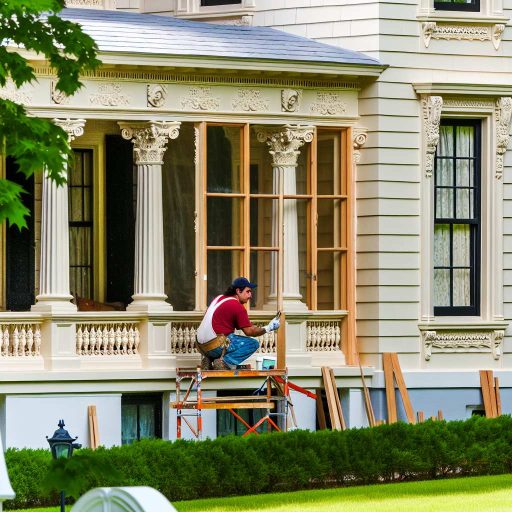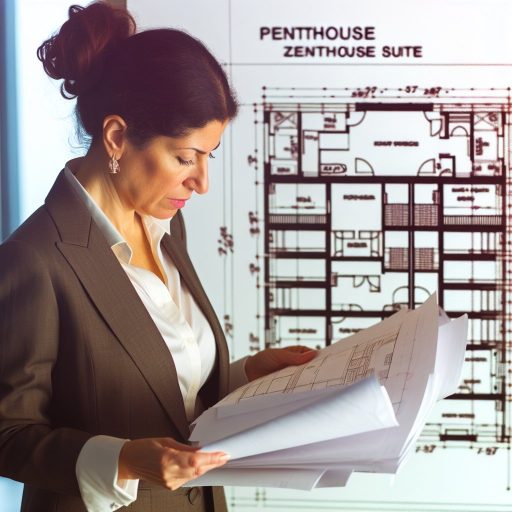Introduction to Historic Preservation Standards for Luxury Homes
Historic preservation standards focus on maintaining the integrity of architectural heritage.
These standards apply to various property types, including luxury homes.
Luxury homes often reflect unique design elements and rich histories.
Preserving these homes protects cultural and historical significance.
Furthermore, it may enhance property value in the real estate market.
Importance of Historic Preservation
Historic preservation fosters community identity and connection.
It encourages public appreciation of architectural styles and craftsmanship.
Moreover, it promotes sustainable development practices.
Overview of Standards
The Secretary of the Interior establishes key preservation standards in the United States.
These standards guide restoration, rehabilitation, and renovation projects.
They emphasize using appropriate materials and techniques during the restoration process.
Additionally, the standards advocate for maintaining original design features whenever possible.
Key Preservation Principles
- Retaining the original character of a property is crucial.
- Repairing original materials is preferred over replacement.
- New additions should be distinct yet compatible with the original structure.
Challenges Faced in Preservation
Luxury homes often face unique preservation challenges.
Changing building codes may conflict with historical features.
Financial constraints can hinder appropriate restoration efforts.
Transform Your Real Estate Decisions
Unlock personalized real estate insights crafted just for you. Get actionable advice designed to amplify your success.
Get StartedAdditionally, determining authenticity can be complex in renovations.
Community Involvement
Community engagement plays a vital role in preservation efforts.
Local organizations often advocate for historic districts and preservation initiatives.
Residents may volunteer their time and resources to support these projects.
Furthermore, public awareness campaigns can enhance appreciation for historic homes.
Overview of Key Legislation Impacting Historic Preservation in the USA
National Historic Preservation Act
The National Historic Preservation Act was enacted in 1966.
This law established the framework for preserving historical sites.
It created the National Register of Historic Places.
This register lists significant architectural and cultural properties.
States must develop preservation plans to receive federal funds.
Communities benefit from funding to maintain historic sites.
Tax Incentives for Historic Preservation
Tax incentives encourage property owners to preserve historic buildings.
The federal program allows for a 20% tax credit for rehabilitation.
State programs often mirror federal offerings to enhance local efforts.
Showcase Your Real Estate Business
Publish your company profile on our blog for just $200. Gain instant exposure and connect with a dedicated audience of real estate professionals and enthusiasts.
Publish Your ProfileThese incentives help offset renovation costs for historic structures.
Additionally, they stimulate local economies through tourism.
Local and State Preservation Laws
Many states have their own preservation statutes.
Local governments often implement zoning laws for historic districts.
These regulations aim to protect the unique character of neighborhoods.
Community involvement is crucial for successful local preservation.
Public input shapes policies that affect historic sites.
The Role of the Advisory Council on Historic Preservation
The Advisory Council advises on historic preservation issues.
It ensures federal projects consider preservation needs.
The Council promotes awareness and education about historic resources.
They often conduct workshops and seminars to share best practices.
This body is essential for fostering community engagement.
Significance of Local Landmarks Laws
Local landmark laws protect specific buildings from demolition.
These laws often establish design review boards.
Such boards evaluate proposed changes to designated landmarks.
A robust local preservation policy prevents hasty alterations.
This maintains the visual heritage of communities.
Criteria for Designating a Home as Historically Significant
Understanding Historical Significance
Historical significance refers to a property’s importance in American history.
It encompasses events, people, and architectural styles that shaped the nation.
Luxury homes often possess unique qualities contributing to their historic value.
Criteria for Designation
Several criteria determine if a home qualifies as historically significant.
- A home must be at least 50 years old to be considered.
- It should possess integrity of location, design, setting, materials, and workmanship.
- The property must reflect significant historical events or trends.
- It should be associated with significant people in history.
- The home may embody distinctive characteristics of a type, period, or method of construction.
Documentation and Evaluation
Proper documentation is essential for establishing historic eligibility.
Homeowners often submit detailed reports to local preservation boards.
These reports typically include historic context and architectural assessments.
Evaluation involves both local and national guidelines for historic preservation.
Preserving Architectural Integrity
Preserving architectural integrity is critical in the designation process.
Maintaining original materials and design elements is vital.
Modern alterations must adhere to preservation standards whenever possible.
Homeowners should consult preservation specialists for guidance.
Engagement with the Community
Community involvement plays a significant role in preservation initiatives.
Showcase Your Real Estate Business
Publish your company profile on our blog for just $200. Gain instant exposure and connect with a dedicated audience of real estate professionals and enthusiasts.
Publish Your ProfileLocal historical societies often promote the significance of historic homes.
Their efforts encourage public awareness and support for preservation.
Delve into the Subject: Mastering Sustainable Architecture Trends For Urban Luxury Residences In The USA
Common Preservation Standards Applied to Luxury Properties
Understanding Historic Preservation
Historic preservation fosters the conservation of culturally significant properties.
It ensures that future generations appreciate and learn from the past.
Luxury homes often embody unique architectural details and craftsmanship.
For this reason, their preservation is crucial for cultural heritage.
Federal Tax Incentives
Property owners can benefit from federal tax incentives for preservation work.
This financial support encourages renovations that honor historical value.
Such incentives can offset costs associated with maintaining luxury homes.
Additionally, the tax credits apply to qualified rehabilitation projects.
Local and State Regulations
Local and state regulations play a significant role in preservation standards.
Many cities enforce strict guidelines to maintain historic integrity.
These regulations often dictate architectural modifications and restorations.
Luxury property owners must comply with these rules for any renovations.
Designation as Historic Landmarks
Some homes receive historic landmark designations at local, state, or national levels.
This status provides a framework for preservation efforts.
Landmark designation often comes with specific maintenance criteria.
Owners of designated properties may also qualify for grant funding.
Community Involvement and Education
Community involvement enhances preservation efforts significantly.
Local organizations often host educational events focused on historic homes.
These programs raise awareness and encourage public engagement with preservation.
Through education, communities foster a deeper appreciation for their heritage.
Technological Advances in Preservation
Modern technology plays a vital role in historic preservation.
Innovative materials and techniques aid in maintaining luxury properties.
For example, specialized restoration tools ensure precise work on delicate details.
Furthermore, digital documentation helps record the original state of properties.
Explore Further: Discovering Evolving Trends In Gated Community Designs For Luxury Homes
Benefits of Historic Preservation for Luxury Homeowners
Enhancing Property Value
Historic preservation significantly boosts property value.
Luxury homes often appreciate faster than new constructions.
Showcase Your Real Estate Business
Publish your company profile on our blog for just $200. Gain instant exposure and connect with a dedicated audience of real estate professionals and enthusiasts.
Publish Your ProfileThis appreciation comes from their unique character and charm.
Moreover, original architectural features attract discerning buyers.
Tax Incentives and Financial Benefits
Homeowners can benefit from various tax incentives.
Federal and state programs often provide financial support.
These programs may include tax credits for restoration projects.
Additionally, some cities offer grants specifically for historic homes.
Preserving Cultural Heritage
Owning a historic home fosters a sense of connection to the past.
It highlights the architectural styles and histories of previous eras.
Furthermore, this preservation supports local culture and community identity.
Luxury homeowners play a vital role in sustaining this heritage.
Creating Unique Living Spaces
Historic homes offer extraordinary design elements.
Luxury homeowners enjoy the uniqueness that comes with these residences.
Each historic property has its own story and character.
Moreover, these homes often include handcrafted finishes and original details.
Contributing to Sustainable Practices
Preservation often promotes environmentally sustainable practices.
Renovating existing homes reduces the demand for new materials.
This practice minimizes waste and balances ecological impact.
Consequently, luxury homeowners contribute to a sustainable future.
Increasing Community Appeal
Historic homes enhance neighborhood aesthetics and charm.
They attract tourism and increase local engagement.
Homes with historical significance often increase nearby property values.
Additionally, they encourage the development of vibrant neighborhoods.
Gain More Insights: The Role Of Architectural Design In Gated Communities For Luxury Living

Challenges Faced by Owners of Historic Luxury Homes
Legal Constraints
Owners of historic luxury homes often encounter strict legal regulations.
These laws are designed to preserve architectural integrity.
Property owners must navigate local, state, and federal guidelines.
Consequently, alterations to a historic home require extensive approval.
Unapproved changes can lead to fines and restoration requirements.
Financial Burdens
Maintaining a historic luxury home often comes with significant costs.
Renovation and preservation can strain financial resources.
Showcase Your Real Estate Business
Publish your company profile on our blog for just $200. Gain instant exposure and connect with a dedicated audience of real estate professionals and enthusiasts.
Publish Your ProfileHistoric homes frequently require specialized materials and skilled labor.
This can lead to unexpected financial burdens over time.
Insurance premiums for these properties can also be high.
Maintenance Challenges
Historic luxury homes often suffer from outdated systems and features.
Such homes may have aging plumbing and electrical systems.
Additionally, roofs and foundations can require frequent repairs.
Owners must prioritize ongoing maintenance to prevent deterioration.
Finding qualified professionals for repairs can also be difficult.
Community Expectations
Community members may have strong opinions about historic homes.
Neighborhood associations often impose specific aesthetic standards.
Homeowners must balance personal preferences with community expectations.
This pressure can complicate renovation efforts significantly.
Emotional Attachment and Legacy
Many owners develop emotional ties to their historic properties.
This attachment can create stress when making necessary changes.
Furthermore, the desire to honor family legacy adds complexity.
Balancing modern needs with historical significance poses challenges.
Learn More: Exploring The Architectural Elegance Of Historic Luxury Homes In The USA
Case Studies: Successful Preservation Projects in Luxury Real Estate
Historic Mansions Restored to Glory
Many historic mansions have undergone impressive restoration projects.
For example, the iconic Rosecliff Mansion in Newport, Rhode Island, showcases exquisite craftsmanship.
This mansion combines luxury with history, captivating visitors annually.
Moreover, meticulous attention to detail ensured accurate restoration of original features.
Such dedication has helped maintain its status as a premier wedding venue.
Preserving Prairie Style Homes
Prairie Style homes, popularized by Frank Lloyd Wright, are becoming notable preservation targets.
The Robie House in Chicago serves as a key example.
This masterpiece underwent extensive renovations to preserve its architectural integrity.
Overall, the project balanced modern amenities with historical accuracy.
Consequently, it remains a vital part of Chicago’s architectural heritage.
Landmark Hotels with Historical Significance
Landmark hotels present unique challenges and opportunities for preservation.
The Ritz-Carlton in New Orleans beautifully combines luxury and history.
Following significant renovations, this hotel retains its historic charm.
Showcase Your Real Estate Business
Publish your company profile on our blog for just $200. Gain instant exposure and connect with a dedicated audience of real estate professionals and enthusiasts.
Publish Your ProfileAdditionally, it offers updated facilities to meet guest expectations.
As a result, it attracts both tourists and history enthusiasts alike.
Updating Urban Loft Spaces
Urban loft conversions present a modern twist on historic preservation.
For instance, the Chelsea Market in New York City exemplifies innovative use of space.
This former Nabisco factory now serves as a bustling marketplace.
Preserved brick walls and original floors highlight its rich industrial past.
Such transformations underscore the importance of blending old and new designs.
Challenges in Preservation
Preserving luxury homes often involves navigating complex regulations.
Local zoning laws can impact renovation plans significantly.
Furthermore, securing funding for such projects is frequently challenging.
However, successful restorations often garner community support and interest.
Ultimately, preserving these homes fosters appreciation for cultural heritage.
Future Trends in Historic Preservation Standards and Luxury Homes
Integration of Modern Technology
Future historic preservation will increasingly embrace modern technology.
Smart home systems will enhance comfort while maintaining authenticity.
In addition, energy-efficient solutions will appeal to environmentally conscious buyers.
Moreover, 3D printing may revolutionize restoration techniques.
Shifts in Buyer Preferences
Buyers are prioritizing sustainability in luxury homes.
They increasingly favor homes that feature renewable materials.
This trend will drive more renovations to meet contemporary standards.
Furthermore, customizable spaces will attract discerning homeowners.
Regulatory Changes and Compliance
Governments will continue to adapt preservation regulations.
Stricter guidelines may emerge to protect heritage sites.
Luxury home developers must align with these evolving standards.
Consequently, maintaining compliance will enhance the value of properties.
Collaborations with Preservation Societies
More developers will partner with historic preservation societies.
These collaborations can drive innovative preservation strategies.
Additionally, they will foster community engagement in restoration projects.
Such partnerships may amplify the cultural significance of luxury homes.
Cultural Sensitivity and Inclusivity
Historic preservation will increasingly reflect diverse cultural narratives.
Luxury homes will celebrate regional architectural styles.
Showcase Your Real Estate Business
Publish your company profile on our blog for just $200. Gain instant exposure and connect with a dedicated audience of real estate professionals and enthusiasts.
Publish Your ProfileThis approach ensures inclusivity in the preservation process.
Moreover, developing homes with cultural context can enrich communities.
Additional Resources
Fanny Garcia – Senior Media Editor – Hopscotch Interactive | LinkedIn




